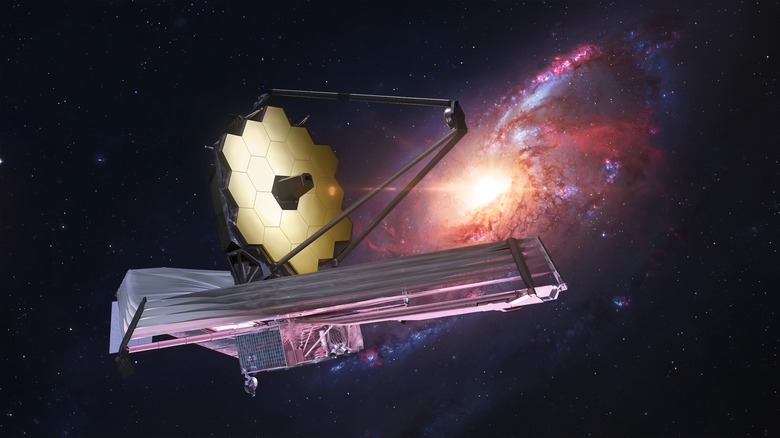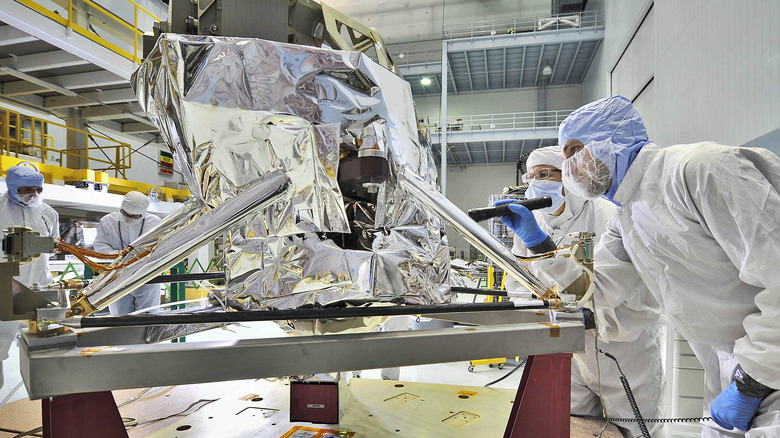James Webb's MIRI Instrument Reaches Its Chilly Operating Temperature
The James Webb Space Telescope is armed with four instruments, three of which work in the near-infrared and the last of which, MIRI or the Mid-Infrared Instrument, works in the mid-infrared. That means that getting MIRI for operations has some special challenges, as the instrument has special sensors which have to be at an extremely cold temperature to work correctly. Now, after months of cooling, MIRI has reached its operating temperatures and will soon be ready for science operations (via JPL).
MIRI uses silicon detectors to see in the mid-infrared range, which will allow it to pick up the redshift of distant galaxies and also take stunning wide-field images of space (via Webb). But these detectors need to be kept at an incredibly cold temperature of below 7 kelvins to work, so the instrument is equipped with a cryocooler system that moves heat away from the instrument to keep it operating effectively.
Since the telescope's launch in December 2021, it has been cooling off in the coldness of space, shielded by Webb's massive sunshield. That took the telescope down to around 90 kelvins, but to get MIRI even colder, operators needed to engage the system's cryocooler.
A dramatic pinch point
During the cooling process, the MIRI team had to face one of their most daunting challenges yet – getting through the "pinch point." This is where the instrument is taken from a temperature of 15 kelvins down to 6.4 kelvins — which is a difficult stage for the cooler. That's because this is the temperature when the cooler has the hardest time removing heat from the system, so there had to be a carefully choreographed progression of adjusting values and the compressor based on the cooler's flow rate and temperature (via NASA blogs).
To make sure they were ready for this challenge, the team practiced the operations in advance, here on Earth. "We spent years practicing for that moment, running through the commands and the checks that we did on MIRI," said MIRI project scientist, Mike Ressler of JPL. "It was kind of like a movie script: Everything we were supposed to do was written down and rehearsed. When the test data rolled in, I was ecstatic to see it looked exactly as expected and that we have a healthy instrument."
Thanks to these preparations, MIRI reached its 6.4-kelvin temperature goal and the researchers were able to perform checks to show it was working as expected. With the instrument chilled and ready, the team is expected to calibrate by taking test images of stars, ahead of science operations later this summer.

